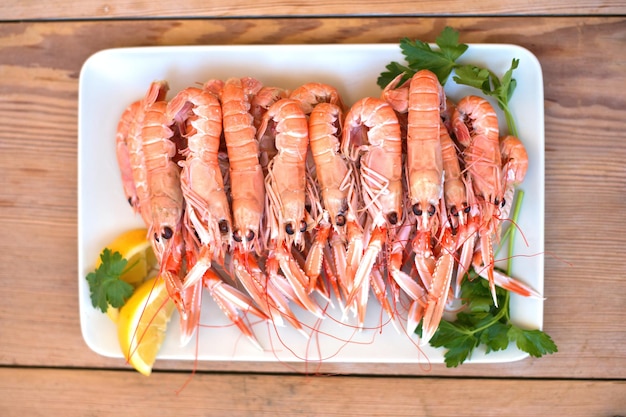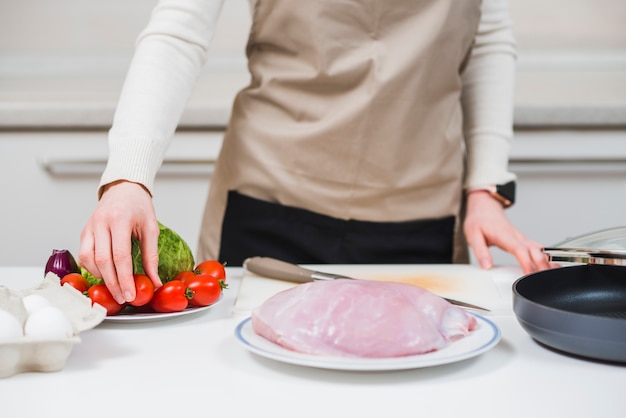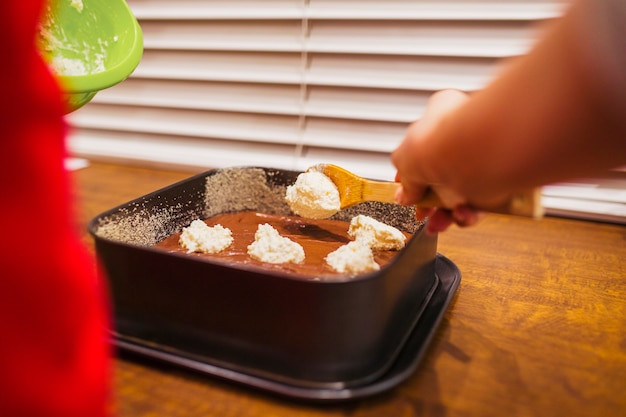(Part 1) Brining: The Secret to a juicy turkey

Why Brine?
Think of brining as a luxurious spa treatment for your turkey. It's all about replenishing the bird's natural moisture, ensuring it stays juicy and tender even after hours in the oven. Brining also works its magic on flavour, permeating the meat with a delightful depth. Trust me, a brined turkey is in a whole different league compared to its unbrined counterpart.
The Brine Formula: My Go-To Recipe
I've experimented with countless brine recipes over the years, but this one consistently delivers the perfect balance of salt and flavour.
Here's what you'll need:
- 1 gallon (4 liters) of cold water – This provides ample space for the turkey to soak and absorb the brine.
- 1 cup (237 ml) kosher salt – The salt draws moisture into the turkey, making it incredibly juicy. Kosher salt dissolves easily and doesn't leave a bitter aftertaste.
- 1/2 cup (118 ml) granulated sugar – The sugar balances the saltiness of the brine and adds a touch of sweetness that complements the turkey's flavour.
- 1/4 cup (59 ml) black peppercorns – These add a subtle peppery warmth to the brine, enhancing the turkey's overall flavour profile.
- 1 tablespoon (15 ml) dried thyme – A classic herb pairing with turkey, thyme adds a warm, earthy note to the brine.
- 1 tablespoon (15 ml) dried rosemary – Rosemary brings a fresh, piney aroma and flavour to the brine, creating a beautifully balanced flavour profile.
- 2 bay leaves – Bay leaves add a slightly bitter, earthy note to the brine, which rounds out the flavour and complements the other herbs.
Let's get brining:
- Combine all the ingredients in a large container, such as a stockpot, cooler, or even a large plastic storage bag. Stir the mixture until the salt and sugar fully dissolve.
- Submerge your turkey in the brine, ensuring it's completely immersed. If using a bag, seal it tightly, expelling any trapped air. This prevents the bag from bursting and keeps the brine in contact with the turkey.
- Refrigerate the turkey for 12-24 hours. The longer you brine, the more flavour and moisture the turkey absorbs. However, 24 hours is generally considered the sweet spot for optimal results.
- Once the brining is complete, remove the turkey from the brine and pat it dry thoroughly with paper towels. This helps to create a crisp skin during roasting.
Important Brining Tips: Mastering the Art
Remember, brining is a culinary art that takes practice and attention to detail. Here are a few key pointers to keep in mind:
- Don't over-salt! Too much salt can lead to a salty turkey. Stick to the recommended amount in the brine recipe to achieve the perfect balance of flavour.
- Keep it cold! Brining should always be done in the refrigerator. Leaving the turkey at room temperature increases the risk of bacterial growth, which can be dangerous. The cold temperature helps to preserve the turkey's freshness and quality.
- Give it time! Don't rush the brining process. Allow the turkey to soak for at least 12 hours, but 24 hours is ideal. The longer brining time allows the flavour and moisture to penetrate deeply into the meat, creating a truly extraordinary culinary experience.
(Part 2) Prepping the Turkey for Roasting: Getting Ready for the Oven

Now that your turkey has had its luxurious brine spa, it's time to prepare it for its starring role in the oven.
Removing the Giblets: What to Do with Those Little Packages
The first step is to deal with those little packets of giblets tucked away inside the turkey's cavity. You can use them for making gravy, but if you're not a fan of giblet gravy, simply discard them.
Patting it Dry: The Secret to crispy skin
Before you think about stuffing, give your turkey a thorough pat-down with paper towels. This is crucial for achieving that sought-after crispy skin. A wet turkey won't brown properly, and you'll end up with a soggy, disappointing result.
Seasoning with Love: Adding a Touch of Magic
Now comes the fun part! Seasoning your turkey is like adding a dash of magic to your culinary creation. I personally adore a simple blend of salt, pepper, and herbs like rosemary and thyme. However, feel free to experiment with citrus zest, garlic powder, or even a sprinkle of paprika for a vibrant twist.
Stuffing or Not Stuffing: The Great Debate
Here's where opinions diverge. Some swear by stuffing their turkey, while others believe it's a recipe for dry meat. I'm firmly in the "not stuffing" camp. Stuffing can hinder the turkey's ability to cook evenly, potentially leading to undercooked stuffing and dry turkey breast. Instead, I prefer to cook my stuffing separately. This ensures it's perfectly cooked through and delightfully moist.
(Part 3) Roasting Methods: Choose Your Weapon

The Classic Roast: A Timeless Tradition
This is the traditional roasting method, perfect for those who prefer simplicity and a straightforward approach.
Here's the lowdown:
- Preheat your oven to 325°F (160°C). This temperature allows for slow, even cooking and helps to prevent the turkey from drying out.
- Place the turkey on a roasting rack inside a large roasting pan. The rack elevates the turkey, allowing hot air to circulate around it, resulting in more even cooking and a crispier skin.
- Roast for approximately 15 minutes per pound of turkey. For a 12-pound turkey, this would mean roasting for about 3 hours. However, the most accurate way to determine doneness is by using a meat thermometer. The turkey is fully cooked when the internal temperature reaches 165°F (74°C) in the thickest part of the thigh.
- Baste the turkey with pan drippings every 30-45 minutes. This helps to keep the meat moist and enhances the browning of the skin.
The Reverse Roast: A Modern Approach to Juiciness
This method starts with a lower temperature, allowing the turkey to cook slowly and evenly, resulting in incredibly juicy meat. It's a great option for those who are concerned about dry turkey breast.
Here's the deal:
- Preheat your oven to 275°F (135°C). This low temperature allows the turkey to cook slowly and gently, promoting even cooking and retaining moisture.
- Place the turkey on a roasting rack inside a large roasting pan. The rack ensures even airflow around the turkey, while the pan catches any drippings for delicious gravy.
- Roast for about 3 hours, or until the internal temperature of the thickest part of the thigh reaches 150°F (66°C). This ensures the turkey is cooked through without drying out.
- Increase the oven temperature to 400°F (200°C) and continue roasting for another 30-45 minutes, or until the internal temperature reaches 165°F (74°C). This final high-heat stage helps to crisp up the skin and create that beautiful golden-brown colour.
The Spatchcocked Roast: Faster Cooking and a Crispy Skin
This method involves flattening the turkey by removing the backbone. It allows for faster cooking and produces a wonderfully crispy skin.
Here's the scoop:
- Remove the backbone from the turkey by cutting along both sides of the spine. Use a sharp chef's knife or kitchen shears for this step. Be careful not to cut into the meat itself, just remove the backbone.
- Flatten the turkey by pressing down on the breastbone. This will allow the turkey to cook more evenly and the heat to penetrate more quickly.
- Season the turkey generously with salt, pepper, and your favourite herbs. Make sure to rub the seasonings into the skin for maximum flavour.
- Roast in a preheated oven at 400°F (200°C) for 45-60 minutes, or until the internal temperature reaches 165°F (74°C). The shorter roasting time makes this a great option for busy cooks.
(Part 4) Achieving that Golden Crust: The Secrets to Crispy Perfection
We've all seen those tempting photos of turkeys with perfectly browned skin. It's not just about aesthetics; it's about achieving a delicious, crispy texture that elevates the entire eating experience.
The High-Heat Trick: Cranking Up the Heat for a Final Blast
During the last 30 minutes of roasting, increase the oven temperature to 400°F (200°C). This final burst of heat helps to brown the skin, create a crispy texture, and enhance the turkey's overall appearance.
The Basting Technique: Keeping the Meat Moist and the Skin Crispy
Don't underestimate the power of basting! Every 30-45 minutes, use a spoon to ladle the pan drippings over the turkey. This helps to keep the meat moist, prevents the skin from drying out, and contributes to a beautiful, golden-brown crust.
The Skin-Brushing Method: A Protective Layer for Maximum Crispiness
Here's a little trick I learned from a seasoned chef: Before roasting, brush the turkey skin with melted butter or olive oil. This creates a protective barrier that prevents the skin from drying out, allowing it to crisp up beautifully during roasting.
(Part 5) Checking for Doneness: The Internal Temperature Test
No one wants to risk serving a raw turkey, so it's essential to check for doneness before carving. A meat thermometer is your best friend!
The Meat Thermometer: The Gold Standard for Accuracy
This is the most accurate way to ensure your turkey is cooked through. Insert the meat thermometer into the thickest part of the thigh, making sure it doesn't touch any bone. The turkey is fully cooked when the internal temperature reaches 165°F (74°C).
The Leg-Jiggle Test: A Traditional Method for a Quick Check
This is a more traditional method for checking doneness, but it's not as reliable as using a meat thermometer. If the turkey is cooked through, the leg should jiggle easily when you move it. However, it's always best to use a thermometer for a more accurate assessment.
(Part 6) Resting the Turkey: Letting the Juices Redistribute
Once the turkey is cooked, resist the urge to carve into it immediately. Allow it to rest for at least 15-20 minutes before carving. This crucial step allows the juices to redistribute throughout the meat, resulting in a more tender, juicy, and flavourful turkey.
(Part 7) Carving Like a Pro: Mastering the Art of turkey carving
This is the moment of truth! carving a turkey can seem daunting, but it's actually quite simple with the right techniques.
The Tools You'll Need: Essential Equipment for a Successful Carving
You'll need a sharp carving knife for precise slicing, a carving fork to hold the turkey steady, and a carving board for a stable work surface.
The Carving Steps: A Step-by-Step Guide to Perfection
- Place the turkey on a carving board.
- Start by carving the breast meat. Use the carving fork to hold the turkey securely while you make thin, even slices. cut across the grain of the meat for the most tender slices.
- Next, remove the legs and thighs. Cut along the joint between the thigh and drumstick, separating the two pieces.
- Carve the leg and thigh meat separately. Cut the meat into manageable pieces, removing the bones as you go.
- If you're serving wings, cut them off at the joint.
(Part 8) The Magic of Leftovers: Turning Leftovers into Culinary Delights
Leftover turkey? It's a gift! Don't throw it away. There are countless possibilities for delicious meals using leftover turkey.
The Classic Turkey Sandwich: A Time-Honored Favourite
This is a no-brainer. Pile some leftover turkey on a crusty roll, add your favourite condiments, like mayonnaise, mustard, or aioli, and layer with fresh lettuce, tomato, and onion for a satisfying sandwich.
turkey soup: A Comforting and Satisfying Meal
Transform leftover turkey into a comforting and flavourful soup. Add a variety of vegetables, noodles, or rice, and season with your favourite herbs and spices for a satisfying meal.
turkey salad: A Versatile and Refreshing Option
Mix leftover turkey with mayonnaise, celery, onion, and your choice of seasonings. Serve on sandwiches, crackers, or lettuce leaves for a refreshing and versatile dish.
turkey pot pie: A Hearty and Delicious Way to Use Leftovers
Create a hearty and delicious turkey pot pie using your leftover turkey. Make a creamy filling with turkey, vegetables, and gravy, and top it with a flaky crust for a satisfying and comforting meal.
(Part 9) The Importance of Safe Handling: Preventing foodborne illness
Remember, turkey is a perishable food, so proper handling is crucial to prevent foodborne illness.
Storage Tips: Keeping Your Turkey Fresh and Safe
Refrigerate cooked turkey within two hours of cooking. Store it in the fridge for up to four days in airtight containers or heavy-duty freezer bags.
Freezing Tips: Extending the Life of Your Leftovers
To freeze cooked turkey, place it in airtight containers or heavy-duty freezer bags. Label and date the containers for easy identification. Frozen cooked turkey will last for up to two months in the freezer.
Reheating Tips: Ensuring Your Turkey is Thoroughly Cooked
Reheat cooked turkey thoroughly to an internal temperature of 165°F (74°C) to ensure it's safe to eat. You can reheat it in the oven, microwave, or on the stovetop.
(Part 10) FAQs: Answering Your Turkey-Related Questions
1. What if I don't have time to brine?
If you're short on time, you can still create a delicious turkey without brining. Just make sure to roast it slowly and baste it regularly to keep it moist.
2. Can I use a frozen turkey for brining?
It's best to brine a fresh turkey. Frozen turkeys can be more difficult to brine evenly, and they may not defrost completely before roasting. If you're using a frozen turkey, allow it to thaw completely in the refrigerator before brining.
3. What if my turkey is too big for my roasting pan?
If your turkey is too large for your roasting pan, you can roast it in two parts. Cut the turkey in half and roast each half separately.
4. How do I tell if my turkey is cooked without a thermometer?
The leg-jiggle test is a traditional method, but it's not as accurate as using a meat thermometer. If the turkey is cooked through, the juices should run clear when you pierce it with a fork. However, for the most accurate assessment, always use a meat thermometer.
5. Can I reuse the brine?
It's not recommended to reuse the brine. The brine will contain bacteria from the turkey, and reusing it could pose a health risk.
And there you have it, folks! The ultimate guide to brining and roasting a delicious turkey. Now go forth and conquer, my fellow turkey enthusiasts. Let your kitchen be filled with the aromas of roasted perfection, and may your Christmas dinner be a triumph of flavour and celebration. Happy holidays!
Everyone is watching

How to Cook Frozen Lobster Tails Perfectly: A Step-by-Step Guide
RecipesLobster. Just the word conjures up images of lavish meals, special occasions, and a taste of luxury. But let's...

Pork Fillet Cooking Time: How Long to Cook It Perfectly
RecipesPork fillet, or tenderloin as it's sometimes called, is a real favourite in our house. It's so versatile, and...

Pigs in a Blanket Cooking Time: How Long to Bake for Perfect Results
RecipesAh, pigs in a blanket. Just the name conjures up images of those delightful little parcels of crispy pastry en...

The Ultimate Guide to Cooking Delicious Frankfurters
RecipesLet's face it, we all love a good frankfurter. It's a classic, simple, and always satisfying. But let's be rea...

Wolf Meat Recipes: A Guide to Cooking Wild Game
RecipesLet's be honest, you don't see wolf meat at your local butcher shop every day. It's a bit of a wild card, but ...
